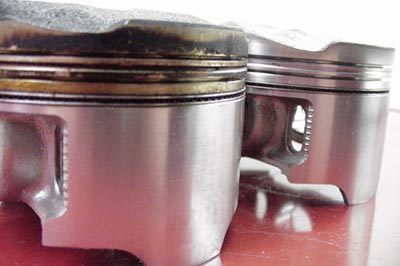I did not stick to the MOM break in, but I also did not follow the recommendations on that site (which I feel are WAY over the top).
At 4500 miles, my Vulcan is burning ZERO oil between changes.
Same for my Silverado at 40k, my '03 Tundra at 125k, wife's Rav4 at 60k, '00 Echo at 70k, Yamaha WR250F at 35 hours, etc....
BTW, all of these vehicles were switched to synthetic at the first oilk change... 2k for the cages and 500 for the Vulcan, and 100 miles (4 hours) for the dirtbike.
Those recommendations are for those who want every absolute last HP out of an engine, with NO concern for engine longevity. I don't care what anyone says... he's recommending taking a brand new engine and immediately running the crap out of it, without even giving it a proper warm up.
Point being that he is completely FOS when he says that the dealer startup will ruin the break in interval, because it was started before it left the factory.
You can "properly" seat the rings at any time during the first 200 miles or so, and yes, they CAN be seated in less than 20 miles.
I go a bit easy during break in, but I'm not paranoid about RPM. I avoid lugging at all costs (which the MOM shift points are very close to lugging under some conditions), and avoid high LOADS.
I also avoid extended running at one speed. I may make the first highway run after less than 50 miles (that happened with my Tundra and Silverado), but every 5-10 miles, I'll pull off of the freeway and let it idle down for 5 minutes, then QUICKLY get back up to speed.
The point of this is to avoid extended intervals with a constant engine temperature. Since the various parts do not heat and cool at the same rates, either extended idling or extended constant speed will create hot and cool spots around the case that you want to attempt to even out.
![Image]()
![Image]()
![Image]()








